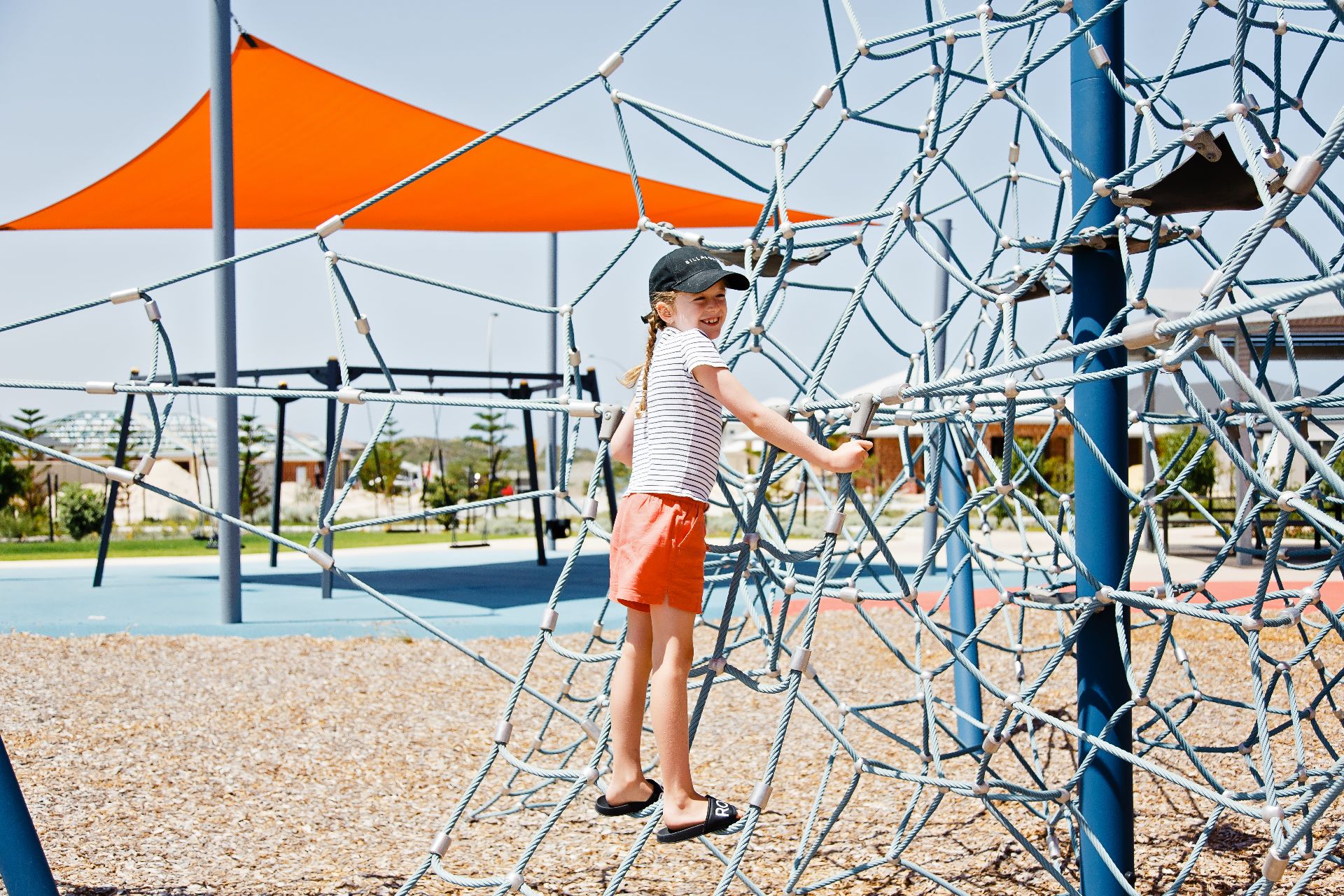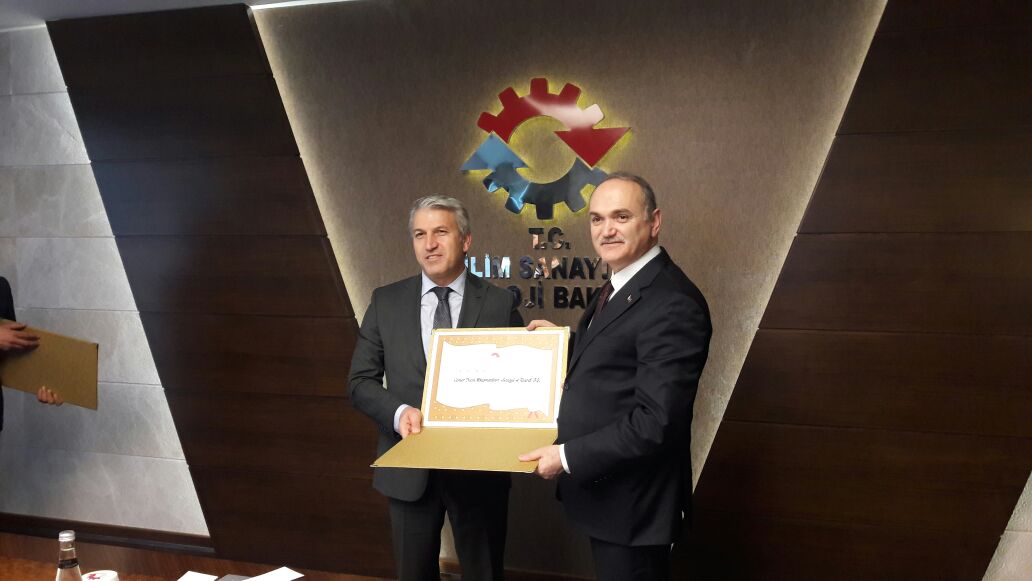A NEW METHOD FOR MANUFACTURING OF ROPES

A NEW METHOD FOR MANUFACTURING OF ROPES USED IN NET OR ROPE CLIMBING GAME GROUPS
Assoc. Prof. Dr. Fatih KAHRAMAN
Dokuz Eylül University
Zafer SAYIN
Assistant General Manager, Cemer Playground Equipment
ABSTRACT
Many current studies demonstrate that environments used for play are significant (Bartlett, 1999; Youell, 2008). Play has different cognitive, social, and motor developmental effects on children in specific environments. Particularly, outdoor games allow children to develop skills such as creativity, imagination, improving social connections, and acquiring learned behaviors. There are two types of outdoor play areas: natural and constructed. Natural play areas provide diversity for sensory experience and physical development, which are critical for outdoor childhood experiences (Parsons, 2011).
Many researchers have determined that outdoor play is one of the most important factors in establishing the relationship and bond between children and the external world, and has lasting effects in forming the child's environmental identity. Additionally, some researchers have emphasized that outdoor play offers health benefits such as increased attention levels and physical activities (Gray et al., 2015; Burdette et al., 2005; Wickel, 2013).
Furthermore, when there are no playgrounds within neighborhoods, "children largely fail to notice most environmental hazards they encounter due to their play impulse, and thus the environment becomes dangerous." In other words, children's impulse to play often drives them to play in unsafe places such as streets, building sides, abandoned areas, and street corners (Bixler and Floyd, 1997). Therefore, outdoor constructed playgrounds provide children with safer play areas under family supervision in addition to the advantages mentioned above.
Actually, risk is part of play for children, and risk increases children's interest in play. At the developmental level, the purpose of play is to safely explore and interact with nature and their environment, imagine together, assess risks and make decisions about how to respond to them, and learn about themselves and their limits (Ball, 2002).
Play areas with no risk and excessive control/restriction result in raising children with low motor control, low self-confidence, less risk-seeking behavior, and less physical development. Therefore, many preschool staff, parents, and childcare providers emphasize the need to balance allowing children to encounter risks and challenges while preventing serious injuries during play (Sandseter, 2010).
Risk perceived by children makes play more attractive. Therefore, without risk and danger perception in play, without the perception of testing themselves, children quickly become bored with play (Hanrahan and Duncan, 2019). Dynamic playground equipment such as rope-based games plays an important role in creating this perception. Particularly in rope climbing games, children develop both cross-coordination skills by climbing ropes and learn to establish good balance and concentration.
Today, there are climbing play courses used for children as well as youth and adults. Some of these play courses are climbing courses designed in a net form. Others are climbing groups containing ropes and similar structures suitable for hand gripping. There are also play courses that include both basic play courses or are designed differently between them while preserving basic features. However, their common feature is that humans grip the rope or net tightly and try to climb, enabling exercise or play close to a natural environment.
Rope Climbing Play Group
The term "rope" used in rope-based play equipment generally means galvanized steel cable wrapped with polyester thread. The basic building blocks of a rope are the wires inside it. On a wire, threads made from materials such as nylon, polypropylene, polyester are covered by weaving or gluing onto the wire in a specific pattern from one or more layers. The wires are brought together spirally around a central core to form a rope. The most important feature of ropes is having a smooth surface texture that provides optimal grip.
Wire ropes operate at high tension levels and are exposed to almost constantly variable loads. These ropes under load are exposed to high amounts of wear and fatigue (Chaplin, 2005). As a general rule, a rope consisting of fewer thick-diameter wires has higher wear resistance and lower fatigue resistance than a same-sized rope consisting of many small-diameter wires (Union Rope, 2016). Therefore, as the number of wires in a rope increases, wear resistance decreases. For this reason, especially the steel wires in ropes used in playgrounds are covered with threads made from materials such as nylon, polypropylene, polyester. To prevent these threads from moving during use, they are either directly woven or glued with chemical adhesives. However, during use under load, the woven or glued threads on the steel wire come loose, deteriorate, or wear out. This causes the wires to corrode and/or wear under environmental conditions, thus shortening the life of the ropes.
A solution has been developed to ensure that these threads are rigidly covered on the wires. The production of ropes used in the study was carried out in two stages. In the first stage, steel wires are covered with threads made from polyester (PES) material using braided technique to increase resistance against friction and breaking. In the second stage, the wire product covered with braiding is arranged as 6 or 7 arms in a winding machine and wound around a guide passing through the center. In traditional production, polyester (PES) threads on ropes are glued to the wire with an adhesive to prevent them from slipping off the wire. In our study, instead of using adhesive, the rope that comes out wound from the winding machine is made adhesive by a special method.
The effects of the applied process on ropes were investigated by conducting metallographic examination and mechanical tests of steel wires and threads on them.
Samples taken for metallographic examination were subjected to grinding and polishing processes and then etched. For etching, they were etched by keeping them in 4% picral solution (4mg picric acid and 100ml ethyl alcohol) commonly used for spring steels for 5-15 seconds. Micro hardness measurement was performed under 9.8 N load and 10 seconds waiting time. Tensile tests were performed at room temperature at a rate of 10 mm/min. The samples obtained as a result of the studies were named traditional production and special production and examined comparatively with each other.
The microstructure images of steel wires in ropes produced by traditional production method, i.e., using adhesive, and ropes produced using the special method are given in Figure 4. As can be seen from the figure, no change occurred in the material microstructure.
As a result of this applied method, especially the polyester threads near the wires bond more to each other (Figure 5). However, as they move away from steel wires, there are also some partially bonded regions (Figure 6). Since these regions are far from the steel wire, they did not cause polyester threads to slip off the wire.
Hardness measurements were made on approximately the same points on both selected wires. Hardness scanning results and hardness traces are shown in Figure 7. The average hardness values of steel wire in rope produced by traditional production method is 521HV, while the average hardness values of steel wire in rope produced by special method is 481HV. As can be seen, a slight decrease in hardness occurred as a result of the special production method. This is due to low cooling rates occurring in the rope left to self-cool. Due to these low cooling rates, a stress relief effect occurred in the steel wire.
This stress relief effect also affected the tensile strength of the steel wire. While the average tensile strength of wires in rope produced by traditional production method is 2142 N/mm² and average percentage elongation is 6%, the average tensile strength of wires in rope produced by special production method is 2010 N/mm² and average percentage elongation is 7.3%. It caused a decrease of approximately 130N/mm². However, this stress reduction also increased the deformation capability of the wires. Therefore, it can be said that their impact toughness increased with a simple calculation (strength x deformation ratio).
CONCLUSION
To ensure that these ropes used in net or rope climbing play groups gain resistance against unraveling, slipping, and friction, braided rope is formed by braiding petroleum-derived material on the outer surface of multiple conductor wires, and the mentioned multiple braided ropes are wound on at least one core rope and made to adhere by a special method. It has been confirmed by applied tests and examinations that this is a production method that prevents possible problems such as opening, deterioration, and wear of the braid on the core rope as a result of twisting, pulling, pressing, etc. usage types.
ACKNOWLEDGMENT
This study was conducted by Cemer Kent Ekipmanları San. Tic. A.Ş. within the framework of the project titled "Design studies of rope play and rope climbing stations integrated into themed systems" with code TM200003 supported by the Ministry of Science, Industry and Technology.
REFERENCES
Ball, D. (2002) Playgrounds: risks, benefits and choices. Middlesex University: HSE Books.
Bartlett, S. (1999) Children's experience of the physical environment in poor urban settlements and the implications for policy, planning and practice. Environment and Urbanization. 11(2)
Bixler, R.D and Floyd, M.F. (1997) Nature is scary, disgusting, and uncomfortable. Environment and Behavior. 29(4)
Burdette, H.L., Whitaker, R.C. (2005) A national study of neighborhood safety, outdoor play, television viewing, and obesity in preschool children. Pediatrics. Sep; 116(3):657-62.
Chaplin, C. R. (2005) The fatigue and degradation mechanisms of hoisting ropes. Hoist and Haul Conference. Perth, Western Australia, 5 - 7 September
Gray, C., Gibbons, R., Larouche, R., Sandseter, E.B.H., Bienenstock, a., Brussoni, M., Chabot, G., Herrington, S., Janssen, I., Pickett, W., Power, M., Stanger, N., Sampson, M., and Tremblay, M.S. (2015) What is the relationship between outdoor time and physical activity, sedentary behaviour, and physical fitness in children? A systematic review. International Journal of Environmental Research and Public Health. 12(6): 6455–6474, doi: 10.3390/ijerph120606455.
Hanrahan, V., and Duncan, K. (2019) Risky outdoor play in early childhood: feel the fear and learn from it. He Kupu, 6(2)
Parsons, A. (2011) Young children and nature: outdoor play and development, experiences fostering environmental consciousness, and the implications on playground design, (Master's Thesis) Master of Landscape Architecture In Landscape Architecture, Virginia Polytechnic Institute and State University, Blacksburg-Virginia
Sandseter, E.B.H. (2010) Scaryfunny, a qualitative study of risky play among preschool children, (Doctoral Thesis) Norwegian University of Science and Technology, Faculty of Social Sciences and Technology Management, Department of Psychology, Trondheim.
Wickel, E. (2013) Variables associated with active and inactive behavior during the after-school period Pediatric Exercise Science. 25(2) 288-99.
Wire Rope User's Handbook, 2016, UnionRope Wire Co. Access address: https://www.unionrope.com/Portals/0/Documents/Technical/Wire-Rope-Basics/wire-rope-handbook.pdf
Youell, B. (2008) The importance of play and playfulness. European Journal of Psychotherapy and Counselling. 10(2)




